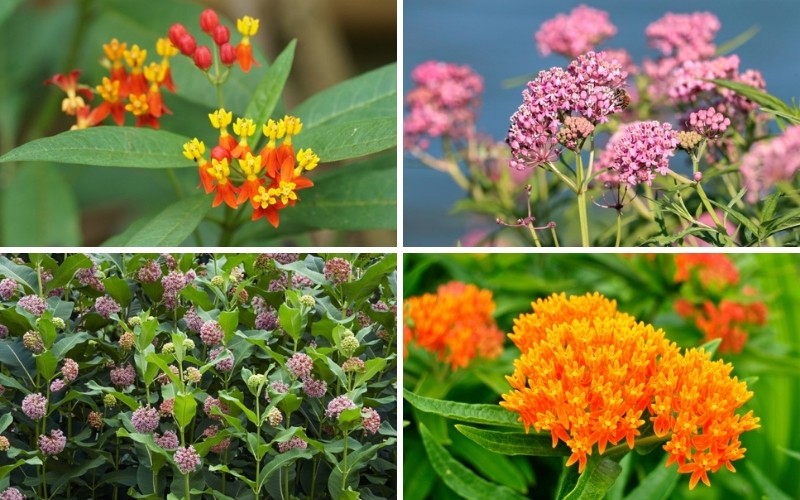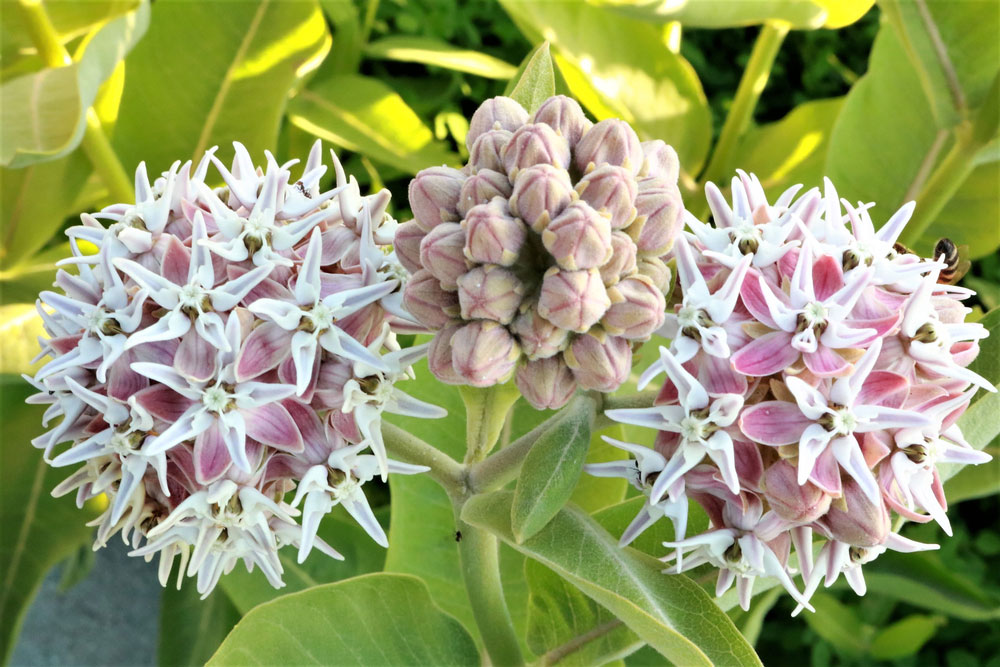
Milkweed (Asclepias spp.) is a genus of plants with over 100 species that grow wild in the Americas. It is vital to the survival of the monarch butterfly as it is the only host plant for monarch caterpillars.
While species differ slightly in appearance, Common Milkweed (Asclepias syriaca L), is known for its striking globe-shaped clusters of tiny pink or purple flowers.
When grown in the flowerbed, or at the edges of your property, milkweed will attract adult Monarch butterflies. The Monarch lays eggs on the plant so the emerging caterpillars will have ample food to grow and eventually transform into new butterflies.
All milkweed species require the same basic care.
| Botanical Name: | Asclepias spp. |
| Common Name(s): | Milkweed |
| Plant Type: | herbaceous perennial |
| Mature Size: | 2 to 6 feet |
| Sun Exposure: | Full Sun |
| Water Needs: | Average |
| Soil Type: | Average to poor |
| Soil pH: | 4.8 to 6.8 |
| Bloom Time: | June through August |
| Maintenance: | Low |
| Flower Color: | Pink, Purple |
| Hardiness Zones: | 4 through 9 |
| Toxicity: | Humans, Pets, Horses |
Light
Plant common milkweed in a location that receives full sun for six to eight hours a day. Although they will grow in partial shade, they may produce fewer blooms and less robust plants.
Water
As a wildflower across much of the U.S. milkweed has adapted to natural rainfall and doesn’t require a lot of watering. It is rather drought-tolerant and typically survives on its own. However, watering your milkweed deeply once a week will encourage healthy growth and copious blooms.
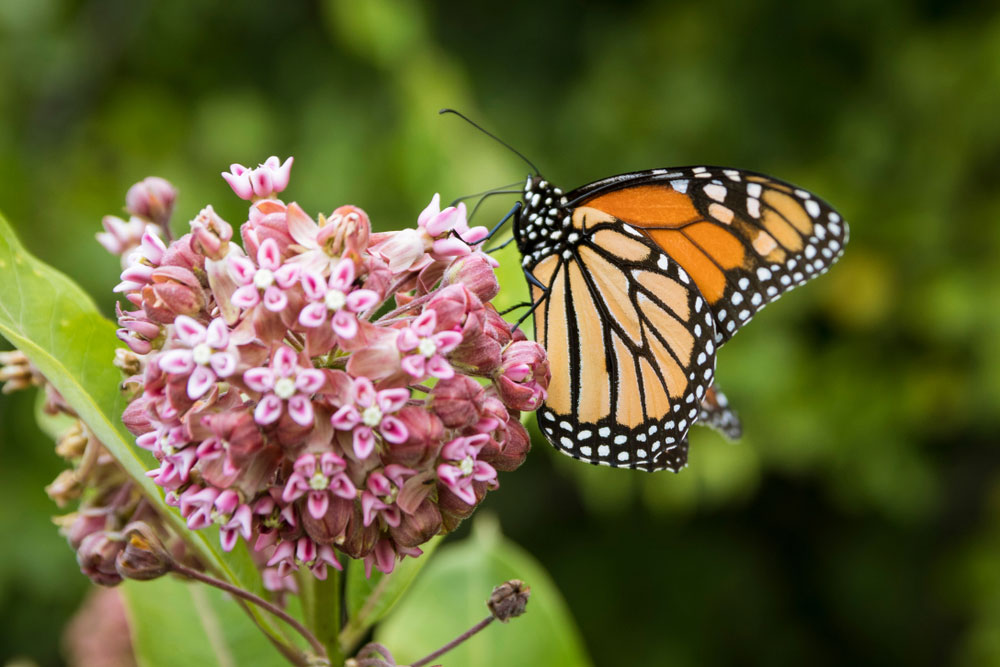
Temperature
Milkweed is an herbaceous perennial in zones 4 through 9. It emerges in the spring when the soil thaws and the weather warms. But it doesn’t tolerate cold weather. The foliage dies back in the fall once your area receives a hard frost.
If you are planting milkweed seedlings, plant them after the danger of frost has passed in your area in the spring.
Soil
Milkweed can be found growing along roadsides, on sunny banks, and in open areas in zones 4 through 9. It adapts to nearly any soil with a pH between 4.8 and 6.8. However, it will thrive in loose, well-draining soil and benefits from amending the soil with compost or well-rotted manure.
Fertilizer
As a wildflower, milkweed does well on its own without additional fertilizer. However, giving it a boost with an application of balanced fertilizer in the spring encourages healthy growth.
Is milkweed toxic?
All parts of the milkweed plant are toxic to humans, pets, and livestock. Ingestion of milkweed plants can cause nausea, vomiting, diarrhea, and abdominal pain. More serious symptoms include a slowing of the heart rate, heart rhythm issues, and seizures.
Additionally, the milky sap of the milkweed plant can cause skin irritations and contact dermatitis.
If you suspect your small children or pets have accidentally ingested milkweed, seek medical advice.
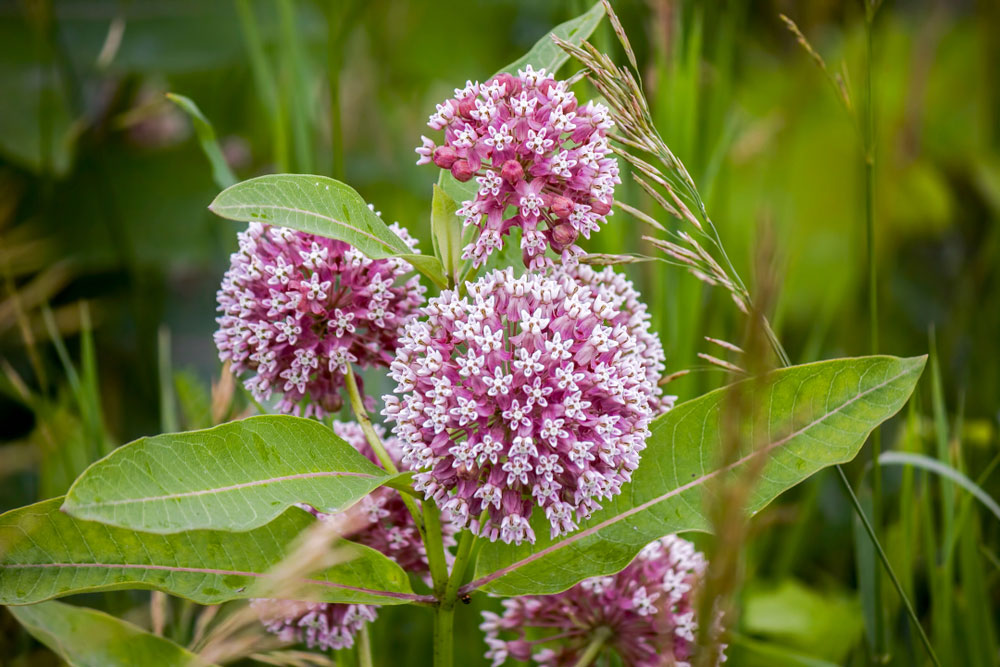
Dividing and Transplanting
Milkweed spreads via underground roots and may spread in your garden. To keep it under control, dig deeply around the plant and remove roots that have spread beyond the boundaries of your garden. You can replant these roots in another location with similar growing conditions.
Deadheading
Milkweed flowers attract bees, butterflies, and other pollinators to the garden. Although you can deadhead the old blooms with no damage to the plant, many prefer to allow the flowers to go to seed. Seeds form inside attractive teardrop-shaped pods that add interest to the flowerbed in fall and winter.
But beware. These pods crack open when the seeds are ripe and fluffy white clouds of seeds emerge. Although they are beautiful to look at, the wind will carry them to other parts of your garden where they will likely sprout and grow the following year.
Seed pods from milkweed plants are often used in nature crafts or dried flower arrangements.
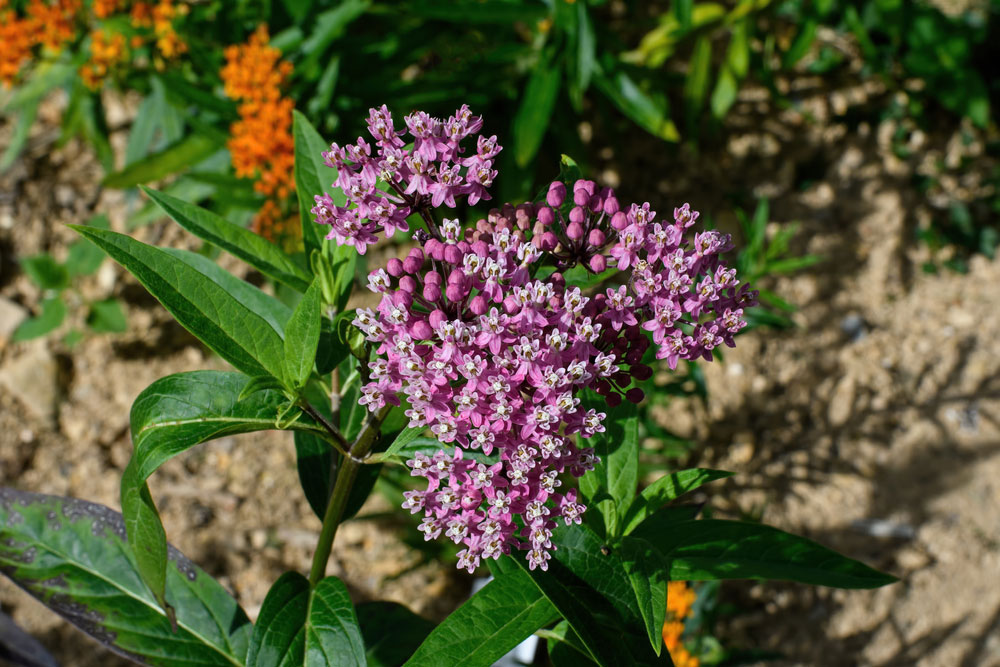
Frequently Asked Questions:
Can you plant milkweed pods?
The seed pod on the milkweed plants contains hundreds of tiny seeds attached to fluffy, white down. To plant the seeds, open the dried pod and remove the seeds first. Plant them to a depth of ¼ to ½ and cover them with soil.
Do Monarch butterflies need milkweed?
Milkweed is important to Monarch butterflies because it is the sole source of food for Monarch caterpillars. Adults lay their eggs on the plant where they hatch into a caterpillar. The caterpillar spends its entire life eating the milkweed plant before making a chrysalis and transforming into a butterfly.
Do birds eat milkweed seeds?
Birds like sparrows and juncos feed on milkweed seeds in the fall and winter. Other birds, like chickadees, gather the fluff to insulate their winter homes in hollow trees or old birdhouses.





